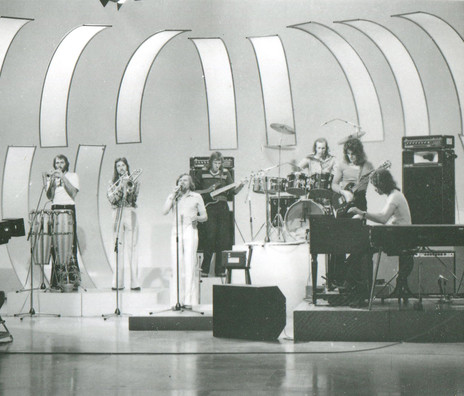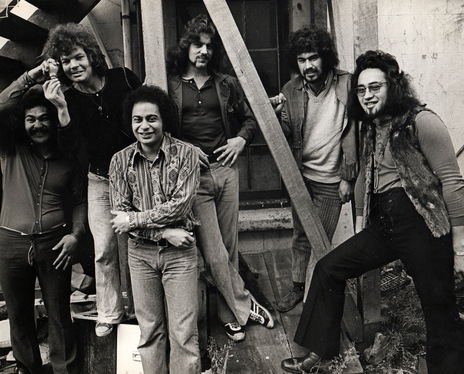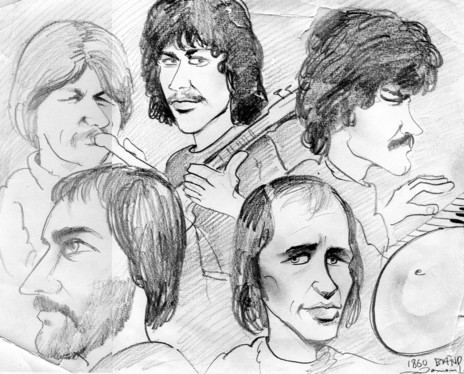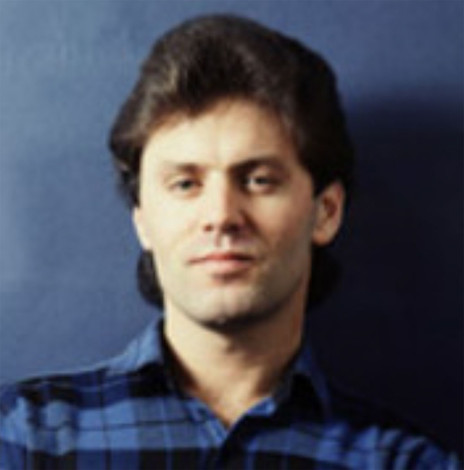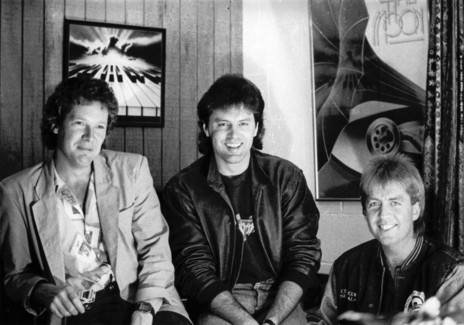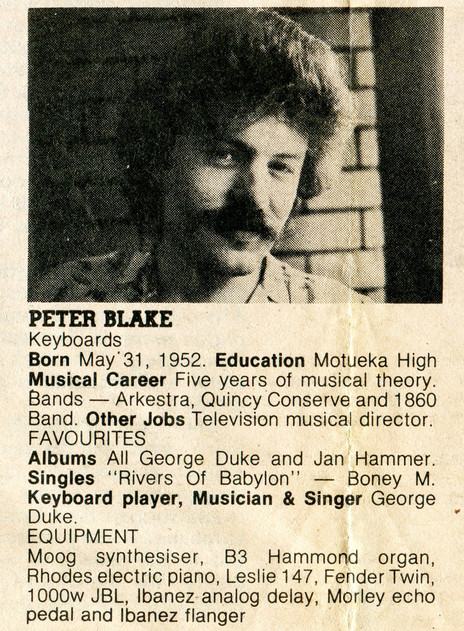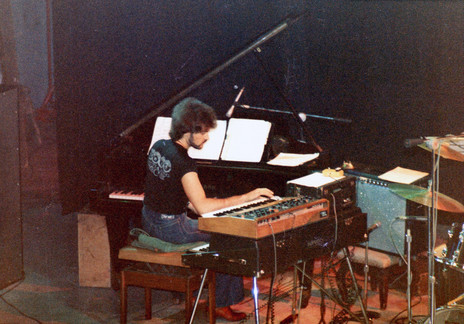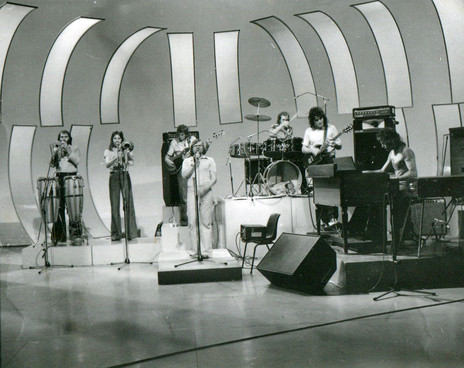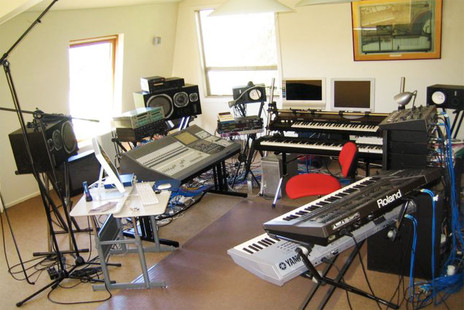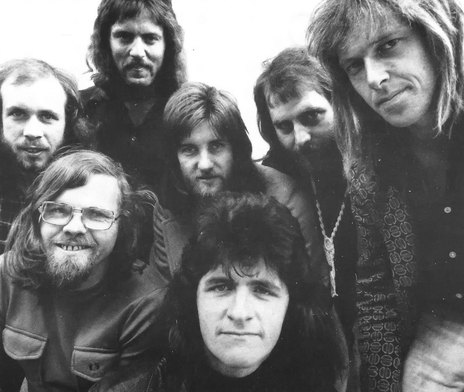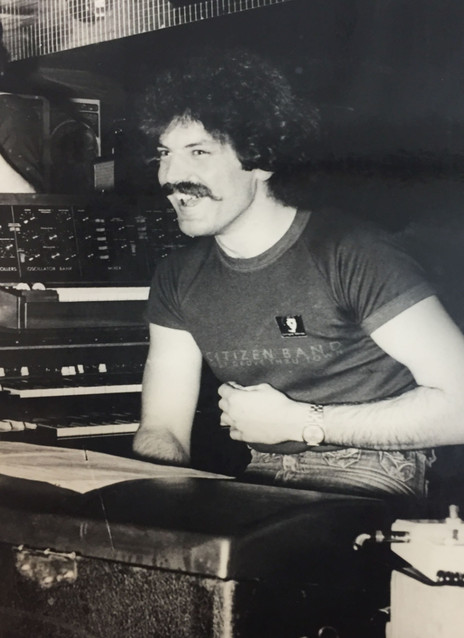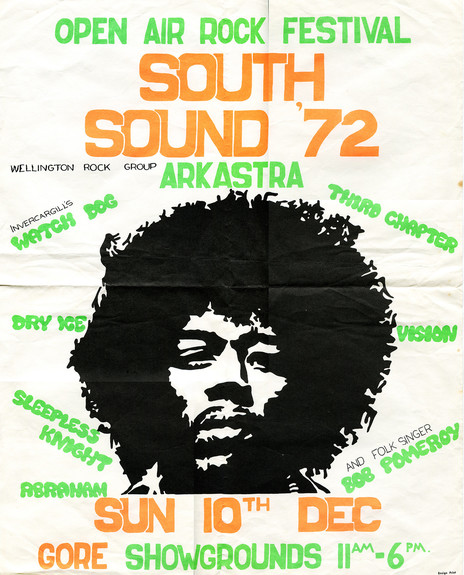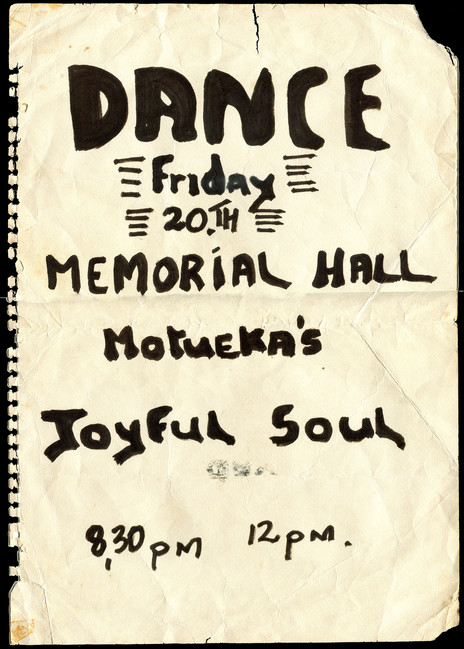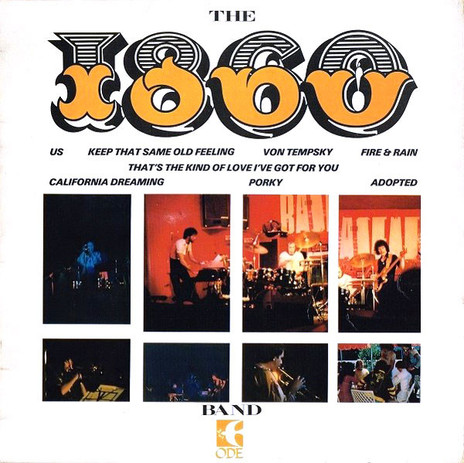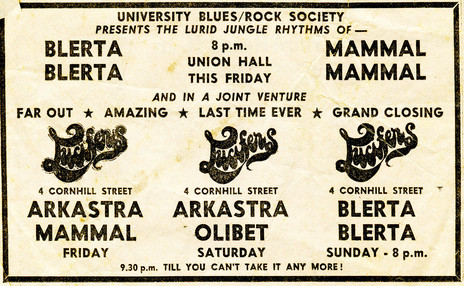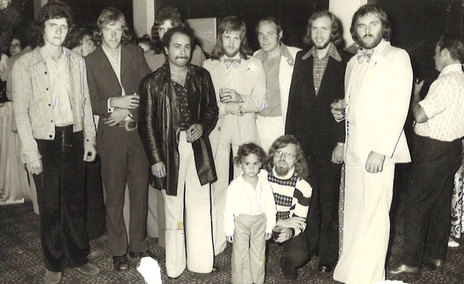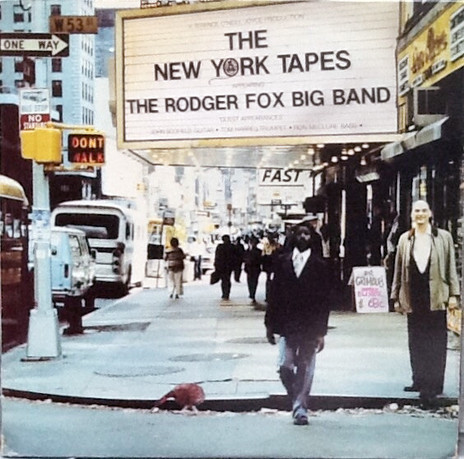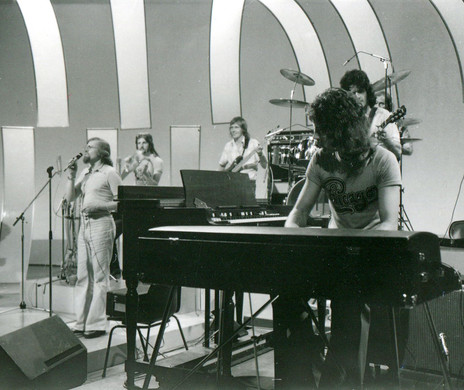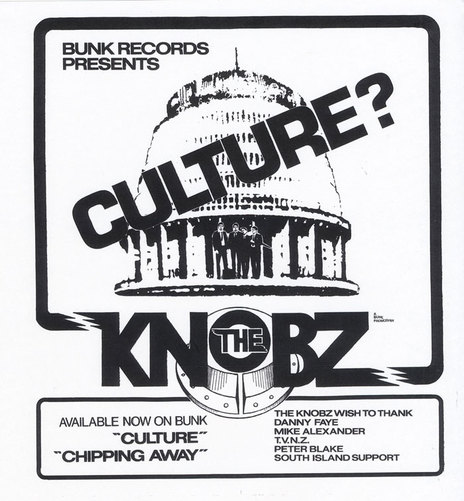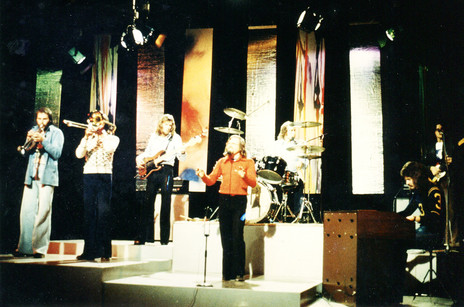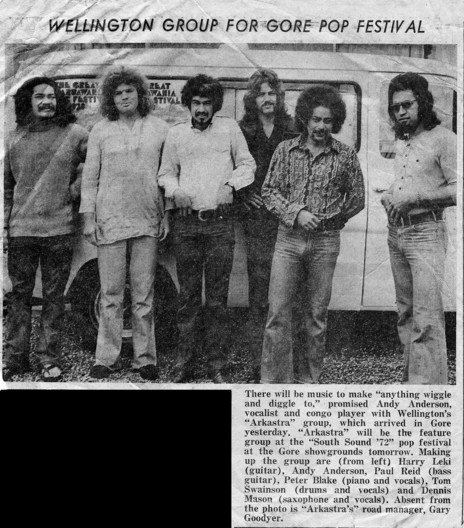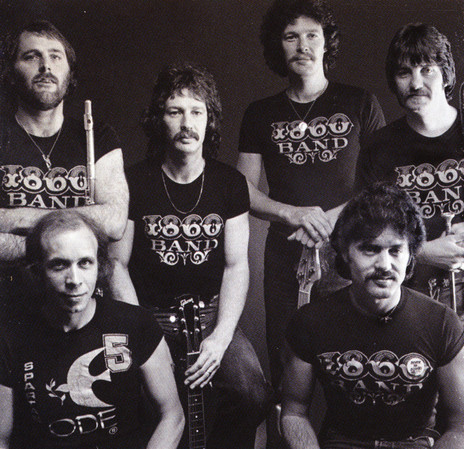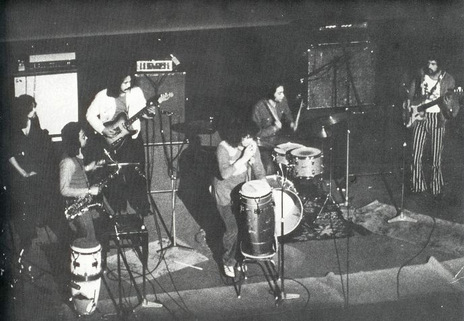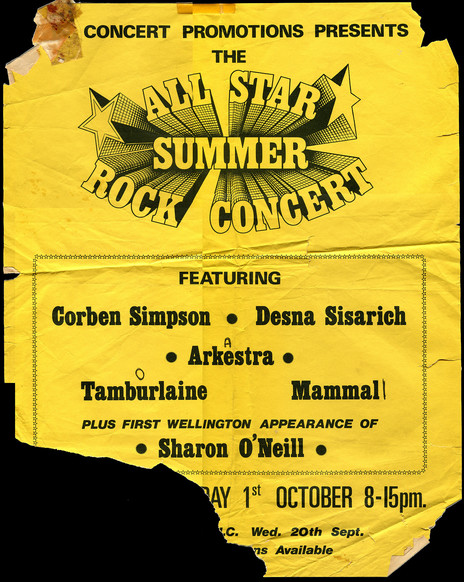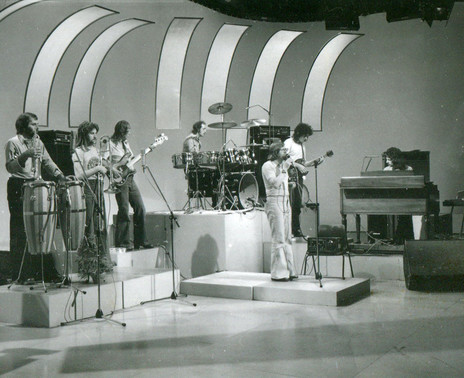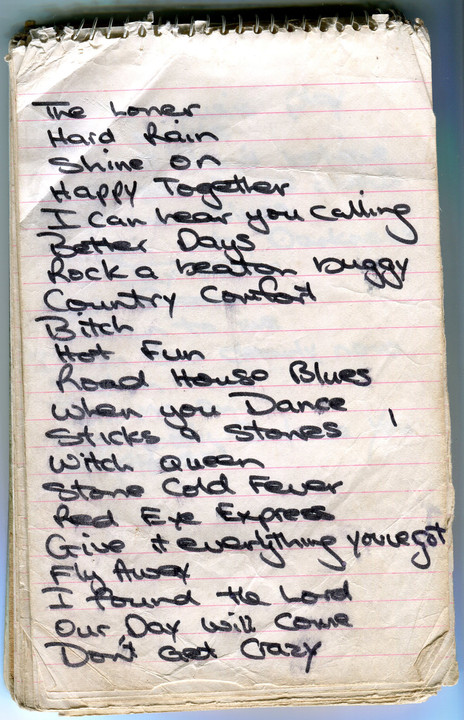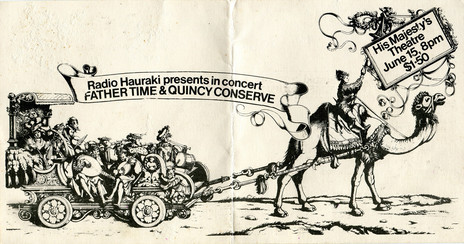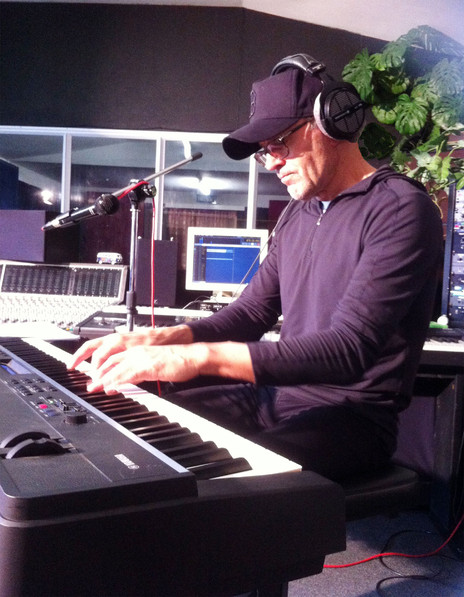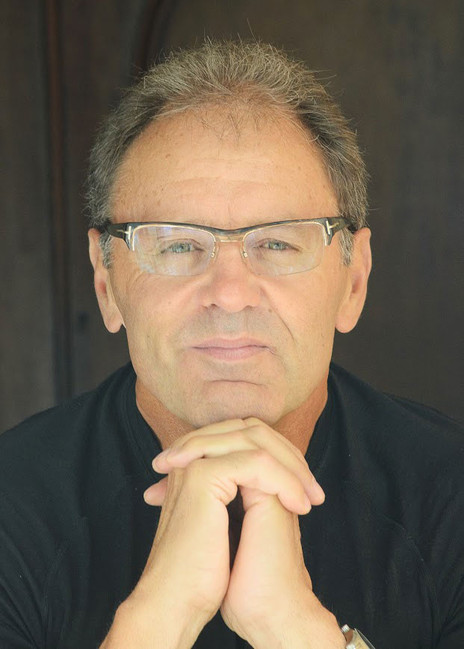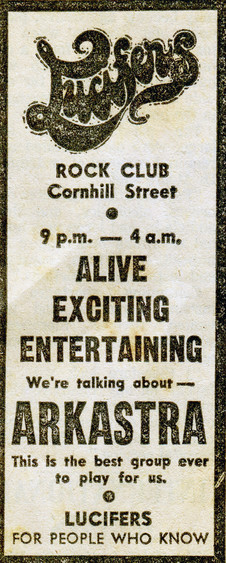Showing an interest in the piano from the age of four, by the time he was seven Blake was taking lessons with Wellington jazz pianist Brian Kearns. Hammering out numbers by Dave Brubeck and The Beatles, at 12 Blake decided to make music his career. Later in his teens, he was encouraged by workshops with visiting American jazz legend John Scofield, and renowned educators Hal Galper and Jamey Aebersold.
In 1975, he joined qUINCYS’ BREAKAWAYgroup The 1860 Band and its sibling, the Rodger Fox Big Band.
Beginning in a high-school band covering Tina Turner, Jimi Hendrix, and Cream tunes, by 1972 Blake was a founding member of Arkastra, led by Andy Anderson and featuring remnants of The Simple Image, The Quincy Conserve, and Farmyard.
Blake was then recruited as keyboardist in The Quincy Conserve, described in John Dix’s Stranded in Paradise as “the tightest group in New Zealand”. In 1975, he joined breakaway group The 1860 Band and its sister Rodger Fox Big Band. Both performed at the 1980 Montreux Jazz Festival in Switzerland and, on the home journey via the States, the Big Band recorded the album The New York Tapes with guest US heavyweights Tom Harrell, Ron McClure and Scofield.
Later, he backed the likes of Renee Geyer, Hello Sailor and The Darren Watson Blues Band. During the 1990s there were many contemporary jazz gigs with 1860 Band trumpet player Geoff Culverwell and Shapeshifter drummer Darren Mathiassen.
While he dabbled with composition in his teens, Blake began exploring songwriting more seriously when working in professional bands. He recalls: “I learned a lot from jamming in bands, often led by keyboards,” he recalls. “In particular the popular Saturday afternoon 1860 Band jazz-fusion jams got me thinking about what could be said by music, how to say it, voicing and the characters of chords, keys and feels. Improvising solos over the top was the precursor to understanding melody, hooks and harmony.”
BY THE LATE 1970S, BLAKE’S WRITING TIME WAS BEING SQUEEZED BY GIGGING, TOURING, FAMILY LIFE, AND WORKING ON TV MUSIC SHOWS.
By the late 1970s, Blake’s writing time was being squeezed by the demands of gigging, touring, family life, and his day job working on television music shows. The television work, though, helped hone skills he would later utilise when he resumed composing. His role in the early years on Ready To Roll was “transcribing, arranging, and recording international hit song backing tracks for local artists to sing on the show,” which helped imbue a feel for the structure of successful pop tunes.
An opportunity also arose when the opening titles of Ready To Roll were updated in the early 1980s, as the futuristic computerised graphics called for a new theme tune, which Blake himself composed.Blake contributed what he dismisses as “inconsequential” tunes for Quincy Conserve, such as ‘What Are We Doing Here’, and added instrumentals such as ‘Blake’s Blues’ and “Space Junk” to The 1860 Band’s repertoire.
His gigging and television musical directing work also exposed him to new technology, especially early synthesisers. In 1975, he utilised the classic Minimoog synthesiser at live gigs, in conjunction with keyboard workhorses, the Hammond B3 organ and Fender Rhodes electric piano.
The next year, local innovator Than Muir built an analogue sequencer for Blake’s use in The 1860 Band. Blake recalls, “This was long before any mass-produced sequencer became commercially available and it enabled me to pre-program arpeggios or bass lines for original live ideas. It would trigger the programmed lines on my moog synth, allowing me to play other keyboards at the same time. It was then hope like hell the band was able to play in machine-like time to the programmed patterns – not always the case!”
Music companies also approached Blake to trial some of their new equipment: “Roland Instruments loaned me new released products in return for touring in a demo band where I composed and played original ideas that would best showcase the technology. Juno, JV1080s, JD800, 770 Sampler, MC500 sequencer and around the neck keytar controllers – it was MIDI hell with early tech teething problems such as sticking notes and lock ups! But out of the chaos came an exciting new sound, drawing large musician crowds to concert venues around New Zealand. The band, aptly titled Over the Top by organiser and guitarist Billy Lang, also included the late Rob Winch on bass.”
Work on Ready To Roll and Radio With Pictures exposed Blake to studio production as well. After attending courses run by American producer Jay Lewis (Linda Ronstadt, Sharon O’Neill) and Queen’s producer Roy Thomas Baker, Blake began producing records on his “day off” from TV work. Because of the paucity of local recordings, Blake produced records such as ‘Culture?’ by The Knobz to help them get television exposure.
This experience, combined with technological evolution of instruments and recording methods, led Blake to develop his own home studio by the early 1980s, “giving me the freedom to compose, arrange, record and mix in my own time and space without the pressure of expensive commercial recording studio time ticking away.”
While occupied by day overseeing the many television shows produced by TVNZ’s Rock Unit, Blake spent many evenings experimenting in his home studio. While most of his work “never saw the light of day,” he picked up some significant commissions on occasions, such as in 1982, when TVNZ promotions head Chris Bourne asked him to come up with a new station identifier for TV One: “I can’t remember whether I was paid,” he says, laughing, “and the composition took all of five minutes to write and play without overdubs on my self-programmed Prophet 5 synthesiser patch sound. I liked its simplicity and it was a move away from the lavish orchestral horn and string productions that had preceded it.”
Blake’s next major compositional assignment came when he was approached “completely out of the blue” by television drama producer Steve La Hood to score The Marching Girls, a 1987 series depicting the Taita marching girls team, who eventually perform to a heavy metal track at their competition.
Blake quickly developed a process for composing for television drama.
“The music brief was for opening and closing themes, the heavy metal track plus all background cues. It was a proper scoring job, meaning background music would be composed, locked-to-picture after the final edit of each episode. To avoid interfering with my television day job I worked through the night in my home studio, which by this stage was advanced enough technologically. So, with some trepidation but bags of enthusiasm, I took it on. Steve and [writer] Fiona [Fiona Samuel] were very supportive and kept a close eye on my progress. We decided on using a very young Kim Willoughby (later in When the Cat’s Away) on, I think, her first recording, to sing the opening theme titled ‘Way To Go’.”
Through trial and error, Blake quickly developed a process for composing for television drama: “I learnt that drama background music was not as simple as I thought it was going to be. Ultimately its purpose is to enhance the viewer’s emotional experience and to intensify action and suspense. But first it was a matter of finding a musical style that was germane with the series, then the overriding theme or identity, in this case ‘triumph through adversity’. Within that, character themes or instruments assigned to characters to help with continuity. There would be changing emotions to roll with in a scene and key points in action had to be musically hit on the frame. One had to avoid spiky moments that would conflict with dialogue and be careful not to overpower the story or scene – ‘if it’s heard, it’s wrong’ is often a truism in television drama and film. It was easy to get melodramatic and finding the right intensity took a while. With all this in mind, it was necessary each cue was musically coherent and developed with the story.
“After reading scripts, I would work with the director, viewing each episode’s final edit and identify sections requiring music, noting what the music cue’s purpose was and what it needed to say. I would then head to the studio and run the episode video non-stop, playing the first ideas that entered my head on digital piano. Instinctively, I drew on my live playing years as how to technically communicate the myriad of musical statements such as minor-sad, major-happy, anticipation, tension, release, unresolved, resolved, etc. These piano sketches would be recorded into my sequencer locked to the video and I could refer to them as I worked on each individual cue, tightening the idea, adding tempo ramps for hit points and full instrumentation arrangements.”
Marching Girls’ nomination for best original music at the 1988 New Zealand Film and Television Awards helped validate Blake’s decision to make a drastic career change: stepping away from his 15 years of television production and into full-time composition in mid-1987.
“I wanted the freedom and control, running my own business and most importantly satisfying the creative composing urge that I had felt most of my life. In conjunction I could ramp up live playing again and employ musician and vocalist friends for session work. Most importantly, I would not be on the sidelines as I had felt in television, but actually doing it.”
One of the first opportunities presented to him was in advertisingmusic.
Although Blake’s original plan was to specialise in scoring for television and film, one of the first opportunities presented to him was in advertising. Charlie Sutherland of advertising agency Colenso hired him for a Bank of New Zealand campaign, where he soon discovered the differences between the public service world of television and the more decadent private world of advertising.
“On the surface, long lunches and vast budgets seemed to be what it was about. Embarrassingly, I had no biz card or skite tape and no idea what to charge, beyond knowing that an ad campaign paid more than a TV theme. The job required a 60-second instrumental soundtrack with 30 and 15 second cut downs. After hitting Charlie with a price there was silence – followed by ‘are you sure that’s enough?’ and he doubled my fee. So this was advertising – I liked it!”
Blake was able to complete the job at his home studio by himself in about 14 hours, receiving his highest pay cheque in the process. It was soon followed by a campaign for Bluebird potato chips directed by Lee Tamahori with a Back to the Future theme.
Despite the largesse, Blake refrained from committing himself to advertising work at this point, only to be lured back a decade later to collaborate with his friend from The 1860 Band, Rob Winch. Instead, in the late 1980s his newly formed company Out of the System Music focused on work with TVNZ, including work in sport, first for the 1987 Rugby World Cup coverage, then the Wellington touring-car street race, and the 1988 Winter Olympics in Calgary. The latter’s synth-simulated heavy rock “guitar” proved particularly popular.
“The phone switchboards at Avalon studios were inundated with calls from young male viewers asking how to get hold of copies of the music.”
More sport work followed, with themes for One World of Sport, the 1988 Seoul Olympics, the Hadlee Testimonial cricket series, Sports Night, NZ Air Games and others. Because “it’s harder to alter music key points for visual events such as logo manifestations and hits after the event,” Blake’s creative process changed to accommodate close collaboration with animators, graphic artists, and editors.
In 1988, Blake returned to scoring drama, although this time on a mystery sci-fi show for youth, Night of the Red Hunter. This was followed by a succession of more work in drama: Ray Bradbury Theatre, Riding High, Maiden Voyage, Shark in the Park, and Lawless. The latter was produced by Tony Holden, with whom Blake used to work on Radio with Pictures; this association also led to Blake contributing to comedy shows such as McPhail and Gadsby, Neighbourhood Watch, Market Forces, and Spin Doctors. Holden later offered him the musical director role on New Zealand Idol and Dancing with the Stars, which Blake declined, seeing it as, “a retrograde step back to my early Ready to Roll musical director days.”
In 1989, Blake teamed up with another former TVNZ colleague, Simon Morris, to compose a song for a nationwide competition for New Zealand’s sesquicentenary celebrations the following year: “The song would reflect our country’s modern identity, a factor that had often come to the fray in my previous work. The competition was incentivised by very large prize money. Nearly every New Zealand composer I was aware of took a shot at it and I couldn’t resist the challenge. I thought its title should be ‘New Zealand’ or at least incorporate it – not rocket science. Style-wise a male rock radio ballad, but to reflect our culture, include Māori components such as karanga and haka, which I had not heard in this format before. Also, perhaps a kids’ choir descant symbolising our future. Most importantly I figured it had to be a feel-good singalong anthem.”
Once a demo backing track was completed, Blake approached Morris to add lyrics, who extended the title to ‘New Zealand – Kainga Tuturu’ (“my true home”). The song won. “There is something deeply emotional writing with hand on heart about your country, and to be selected as winners meant the earth to both of us. I was asked to put together the final, which I did with Nigel Stone at Marmalade Studios. It was a serious mega production with an A-team of backing vocalists including Annie Crummer and Suzanne Lynch. I played all instruments and Billy Lang and Rob Winch added guitar. I recorded the karanga, haka and Friendly Road kids’ choir components in Auckland. The song was well received with radio airplay and a video, opening and closing TV1 daily. It was used as soundtrack for documentary epics such as sailor Sir Peter Blake’s Whitbread Round the World Race and to promote New Zealand tourism globally. School kids sang it at assembly across New Zealand and to this day it’s played at live international sports events such as the All Blacks or Black Cap games.” The song is commercially available on the New Zealand Our Land Our Music Volume Two CD.
Work in documentary followed, including Shaky Beginnings, The Lost Dinosaurs, and The Last Place on Earth, as well as Natural History Unit productions such as Tropic Gothic. Blake also contributed music to lighter feel-good documentary series like Magic Kiwis, Remarkable Vets, and Wild About New Zealand. However, he notes that documentary work has diminished recently in part due to the prevalence of reality television and the tendency for producers to source from copyright-free library music (something Blake regretfully admits to composing for “in a weak moment”).
Blake’s TV themes include One News, Holmes, Breakfast, Q&A, Face the Nation, Frontline and more.
One of the most widely heard of Blake’s compositions was in 2004 for Lion Man, a television series that sold to 120 countries. The series was based on Craig Busch, the owner-operator of a tourism lion park in Whangarei, so Blake decided to “go African” with the music and have Bob Smith devise the lyrics describing Busch’s preservation work for lions. Although the series used library music for the incidentals, these were expensive to obtain for international distribution, so producers asked Blake to compose new music to substitute. Not only was the series popular internationally, the theme tune was widely adopted as a ring tone around the world.
Probably more familiar to local viewers were Blake’s themes for One News, Holmes, Breakfast, Q&A, Face the Nation, Frontline and more. He’s provided music for election campaigns too, including the Labour party’s award-winning 1987 campaign and the National party’s notorious 2005 “Taxathon” parody of the old Telethon theme, which won both the National Business Review and AdMedia campaign of the year. “One election year I worked on both Labour and National’s campaigns with Rob. I’m not sure it would have gone down well had the parties known we were doing both!”
Blake was approached by Jon Mark, of English jazz-fusion duo Mark-Almond, to make an album for his ambient music focused White Cloud label, which resulted in 1994’s Private Dawn, Blake’s solo debut.
“I wasn’t really a new age artist, thinking most music in the category was a bit insipid and akin to lift music. But I enjoyed exploring synthesiser pad textures and the challenge of trying to build some musical depth into my ambiental compositions and arrangements. It occurred at a time of personal soul searching and as a result its mood is heavily contemplative.”
Splitting his time between Asia and New Zealand these days, Blake has returned to his gigging roots. “After 25 years composing themes and soundtracks, I’ve returned to live performance and enjoy the purity of writing the music I play from a blank canvas. I’m trying to integrate my composing with my piano performance, grow both of them and in doing so have learned that the more creative freedom, the more meaningful and aesthetically pleasing the outcome. Stylistically, I pay homage to jazz, classical and pop music but express my life passion through what I simply describe as creative improvisation music for here and now.”
